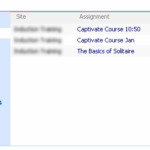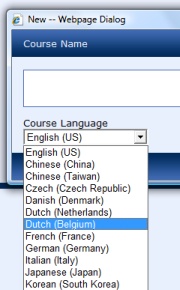The SharePoint Learning Kit is a lightweight LMS module that can make your SharePoint site a mini-LMS. Especially together with Windows SharePoint Services, it is a very cost-effective way to distribute e-learning content in your organisation with a minimum of “tracking”.
Of course, you do not get the very detailed reporting a true Learning Management System offers, but you can track progress (not attempted, in progress, completed), track score of a test, assign learning content to users or usergroups, and grade tests manually. Your content needs to be SCORM-conformant, as the SLK uses the SCORM API for communication between content and LMS.
The SharePoint Learning Kit is a feature that needs to be deployed on your farm, assigned to a web application, and gives you a feature that you can activate on a site level. It includes an “assignment” web part that instructors and learners use to assign, follow and grade content.

I had some trouble getting Adobe Captivate content to communicate with the SLK, I did not get the scores from a test. Finally, I found this article. In the .HTM file that is generated by Captivate, you can tune and tweak some scorm parameters. Changing var g_intAPIOrder = 0; from 0 to 1 does the trick for the SLK.

 Someone asked me if it would be possible to add a new language to the available language packs of the Microsoft Learning Content Development System. Well, as the system supports already multiple languages, that should not be that difficult. This is what I did (use at your own risk!):
Someone asked me if it would be possible to add a new language to the available language packs of the Microsoft Learning Content Development System. Well, as the system supports already multiple languages, that should not be that difficult. This is what I did (use at your own risk!):
